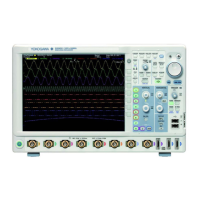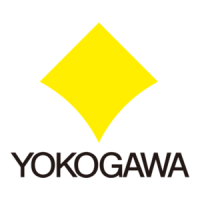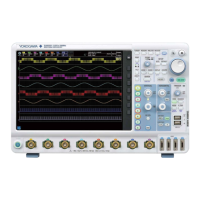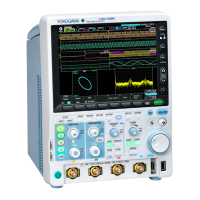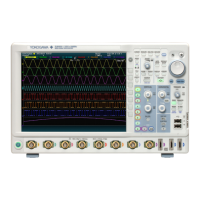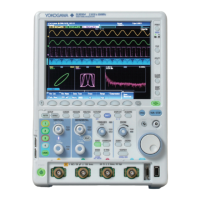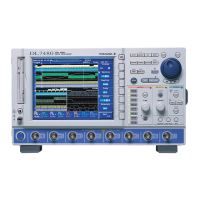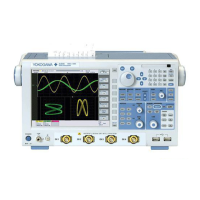5-143
IM 710105-17E
Commands
5
:MEASure:USER<X>:NAME
Function Sets or queries the name of a Calc item.
Syntax
:MEASure:USER<X>:NAME {<String>}:MEAS
ure:USER<X>:NAME?
<x> = 1 to 4
<String> = Up to 8 characters
Example
:MEASURE:USER1:NAME "MAX"
:MEASURE:USER1:NAME?
-> :MEASURE:USER1:NAME "MAX"
:MEASure:USER<x>:STATe
Function Sets or queries the on/off status of automated
measurement of a Calc item.
Syntax
:MEASure:USER<x>:STATe {<Boolean>}
:MEASure:USER<x>:STATe?
<x> = 1 to 4
Example
:MEASURE:USER1:STATE ON
:MEASURE:USER1:STATE?
-> :MEASURE:USER1:STATE 1
:MEASure:USER<X>:UNIT
Function Sets or queries the unit of a Calc item.
Syntax
:MEASure:USER<X>:UNIT {<String>}:MEAS
ure:USER<X>:UNIT?
<x> = 1 to 4
<String> = Up to 4 characters
Example
:MEASURE:USER1:UNIT "V"
:MEASURE:USER1:UNIT?
-> :MEASURE:USER1:UNIT "V"
Description The measured values are never affected by the
unit.
:MEASure:USER<x>:VALue?
Function Queries the automatically measured value of a
Calc item.
Syntax
:MEASure:USER<x>:VALue? [<NRf>]
<x> = 1 to 4
<NRf> = See the DLM2000 Features Guide for
this information.
Example
:MEASURE:USER1:VALUE?
-> :MEASURE:USER1:VALUE 1.000E+00
Description • If the value is immeasurable, the DLM2000
returns “NAN” (not a number).
• The <NRf> is used to specify which iteration of
automated measurement to query the measured
value from.
• If <NRf> is set to 1, the oldest measured value
in the automated measurement memory is
queried.
• If a measured value does not exist at the
specified iteration, the DLM2000 returns “NAN”
(not a number).
• If <NRf> is omitted, the most recent measured
value is queried.
:MEASure:WAIT?
Function Waits for the completion of waveform parameter
automated measurement with a set timeout.
Syntax
:MEASure:WAIT? {<NRf>}
<NRf> = 1 to 36000 (the timeout specified in 100
ms intervals)
Example
:MEASURE:WAIT?
-> :MEASURE:WAIT 1
Description • The command returns zero if the automated
measurement finishes within the specified
timeout. If automated measurement does not
finish, or if it was never taking place to begin
with, the command returns 1.
• Even if you set a long timeout, the command will
return zero as soon as automated measurement
finishes.
5.20 MEASure Group
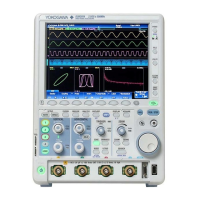
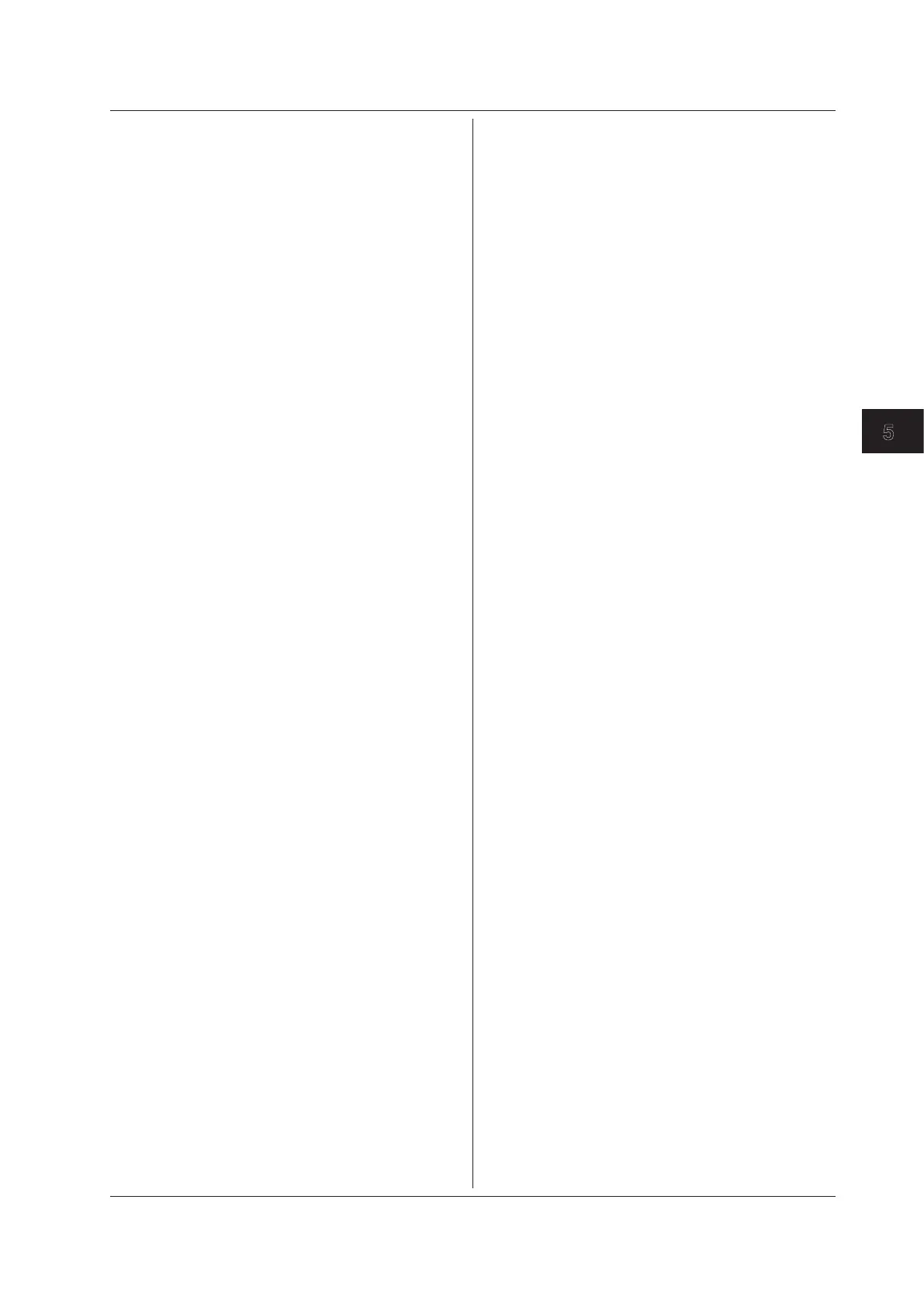